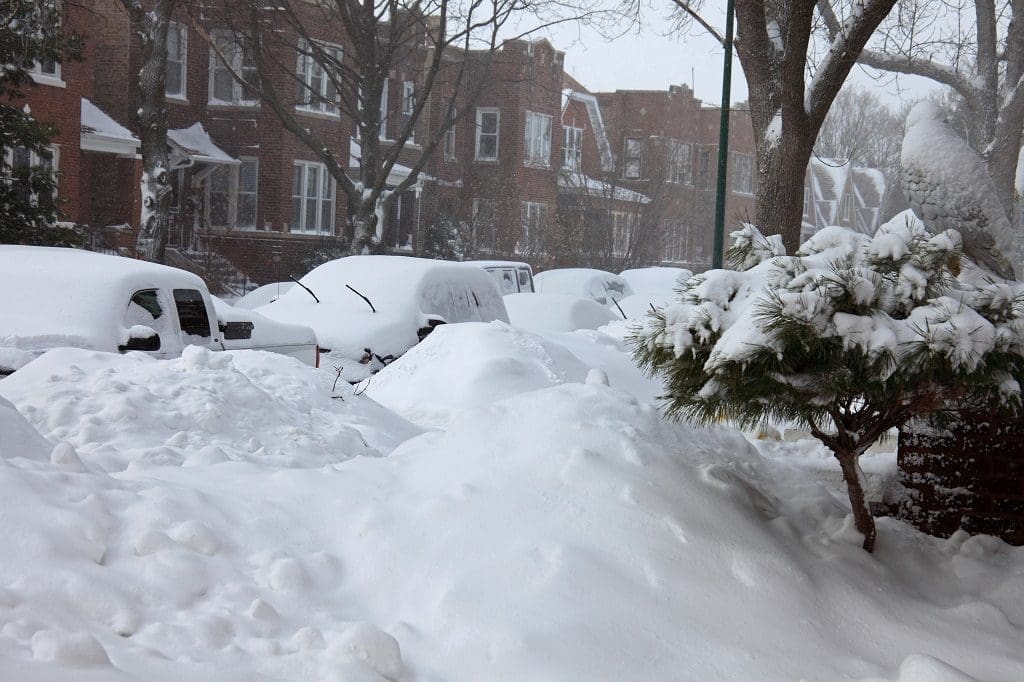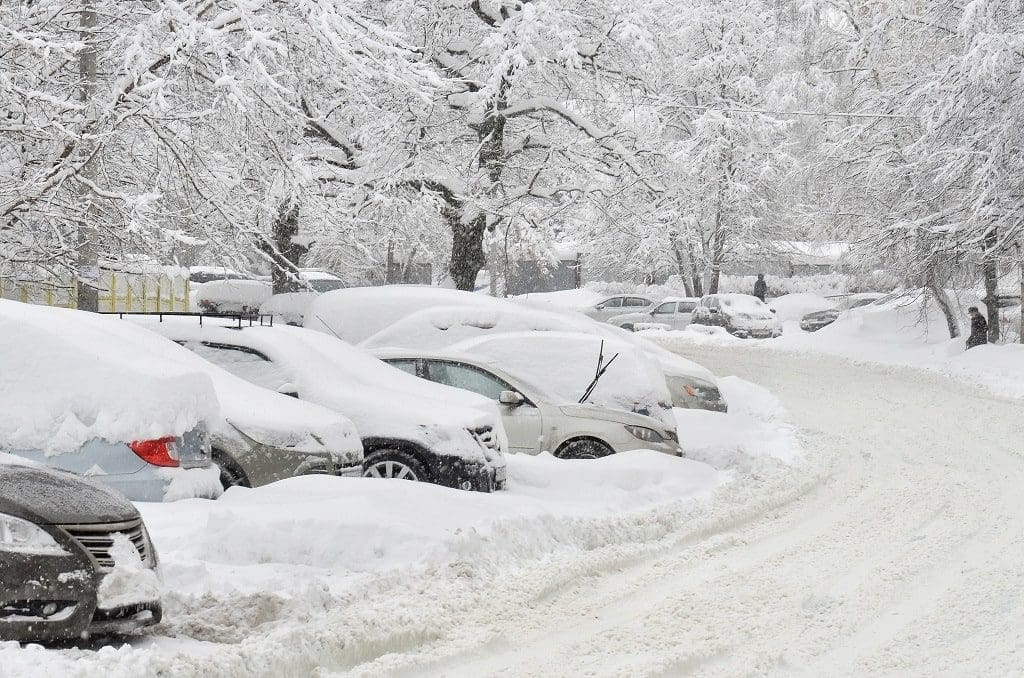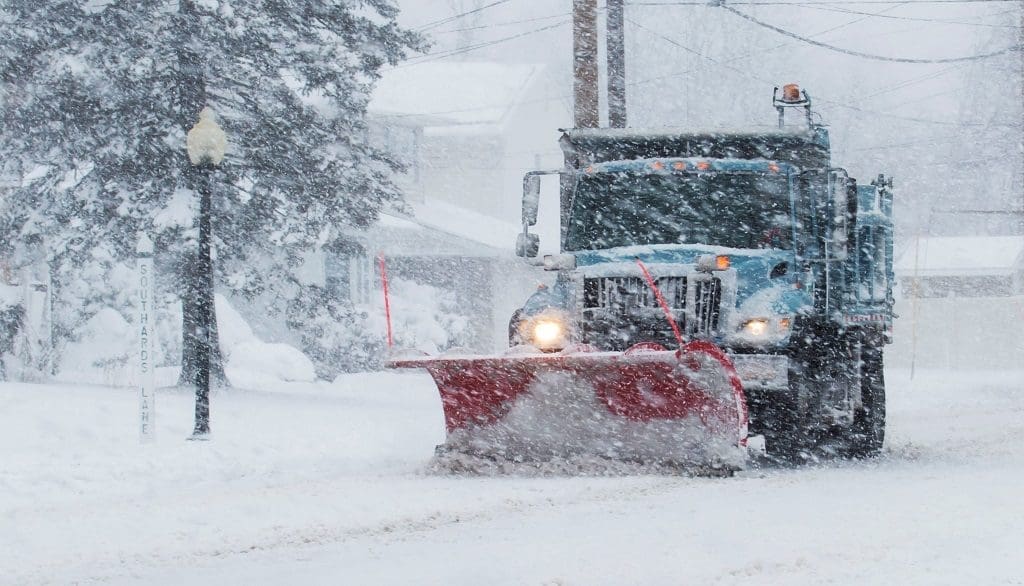Every year, businesses lose 3 billion dollars to winter storms. How can you protect your business from all that property damage, downtime, and lost revenue?
According to FEMA, 40–60 percent of businesses affected by a disaster never re-open. With such high stakes, it’s not just “good practice” to make sure you’re ready—it’s vital. If a snowstorm is in your forecast, follow this guide for tips on how to prepare for a snow emergency.
Snow Emergency Advisory Levels

Most states use three advisory levels to inform citizens of snowy conditions:
- Level 1 – Roads are hazardous
- Level 2 – Driving is discouraged
- Level 3 – Roadways are closed
The mayor or governor is responsible for sending weather alerts. How will you know there’s a snow emergency? Keep an eye out for any of the following:
- Mass text messages
- Reverse–911 phone calls
- Emergency TV broadcasts
- Lighted signals
Some states use different alert systems. Know the details of all three levels and tailor your preparations to each scenario. Definitions for snow emergency levels vary by county and state, but below is a general guideline:
Level 1 Snow Emergency
What does level 1 snow emergency mean? The first state of a snow emergency is the tamest and usually involves 2–4 inches of snowfall. Roadways are considered dangerous but drivable. Still, exercise extreme caution. Roadways could be icy with low visibility.
Level 2 Snow Emergency
This level of emergency is usually called after 4–8 inches of snow. Wind will blow it around and cause drifting, so you should only drive if it’s absolutely necessary. Icy roads are almost guaranteed.
Call your employees and encourage them to telecommute. Car accidents during level 2 snow emergencies are too common. Keeping your people safe at home will give you and their families peace of mind.
Level 3 Snow Emergency
8–14 inches of snow will usually bump the response to level 3. In this case, the law only allows emergency vehicles on the roads. It goes without saying that you should keep all employees at home. Stay safe and stay indoors.
Street Parking

Parking rules change during snow emergencies, so watch out for “parking prohibited during snow emergency” signs around your business. Blocking one of those routes during any snow emergency might result in a parking ticket or even land your vehicle in an impound lot. Alert customers and employees to move vehicles to off-street lots to accommodate snow plows.
Emergency Snow Plan
“By failing to prepare, you’re preparing to fail.” The adage is just as true when it comes to winter storms. The best way to minimize losses and keep your business running is by preparing for the worst.
If you don’t protect your facilities and equipment, your employees won’t have any work to come back to. Use these tips to take stock of your readiness and learn how to prepare for the snow.
#1: Alert Your Employees of Your Business Interruptions
If your local municipality believes a snowstorm is serious enough to impair driving, you should heed their advice and close your business for the duration of the storm. In this case, your company must take care to update your employees, considering they are the life force of your business.
Businesses located in areas targeted by snowstorms should have snow contingency plans in place to avoid miscommunication. Set up a company-wide alert system that sends push notifications and also stipulates whether they are required to come to work. SMS messages, email, and voicemail remain the easiest ways – just make sure you have an updated database.
Depending on your type of business, you may also need to communicate with clients and contractors. Automated emails and alerts on social media like Twitter, Facebook, and Instagram work well to broadcast these types of messages. No one wants their employers or clients and customers to arrive at a closed store.
#2: Reimburse Your Employees
Should you close your business due to inclement weather, you are expected to pay all exempt employees for the time they missed as if it’s a normal working day. If you remain open and an employee decides not to come to work, you are not required to pay them because, in theory, this is considered a day of leave.
Even if working from home isn’t possible, you should still consider paying them for a full day’s work. It’s likely, they may have to care for their children due to school closures and might not feel comfortable commuting during high snow emergency levels.
#3: Check Your Insurance
As a tenant or property owner, you should familiarize yourself with your insurance coverage. Recognizing what your policy covers and what you’re entitled to as deductible claims and coverage limits is important so that you can draft a snow contingency plan.
You may also want to consider taking out business interruption insurance. A prolonged snowstorm will affect profits, and this kind of insurance guards against financial loss by covering costs during this time.
Business interruption insurance is not sold as a separate policy but an add-on to an existing property insurance policy. It is typically grouped together with general liability and property insurance into a Business Owners Policy. Consider this insurance mandatory if your business is in a location that encounters snowstorms.
#4: Make a List of Emergency Contacts
Your snow contingency plan should include a list of the following contacts, so you can easily contact them if you need their services during a snowstorm emergency.
- Emergency snow removal service companies like Earth Development
- Electrician
- Plumber
- Local fire department
- Your insurance company
- Landlord (if you’re a tenant)
- Neighboring businesses
- Local gas, electricity, and other utility companies
- Roof and gutter specialists

#5: Arrange for Snow Removal — Prepare to Clear Your Parking Lot & Sidewalks
Make snow removal a priority as soon as the storm subsides, especially if your business relies on foot or vehicle traffic. We recommend hiring a snow removal company as they’ll be to do the job quicker, giving you time to focus on other pressing issues.
If you’re a tenant, you’ll need to check your lease and other local regulations to make sure you’re legally allowed to hire a company on your own. After the snow is removed, you should salt your sidewalks and parking lots to prevent ice from forming.
A word of caution: Stay clear from areas immediately after using de-icing products unless you are also removing the ice. Rock salt, for example, provides traction by melting the layer of ice on a pavements’ surface and can cause a person to slip.
#6: Set the Right Temperature on the Thermostat to Avoid Pipe Freezing
Frozen pipes are one of the biggest contributing factors of property loss and damage. Ensure you keep your business warm enough. This includes uninsulated areas colder than 50F to avoid burst pipes.
It’s also wise when preparing for the snow to insulate crawlspaces, basements, and any other areas that experience freezing weather. Piping insulation is relatively cheap and will keep pipes warm during conditions.
#7: Make a Plan for a Severe Snowstorm
You can’t make trips to the hardware store during an emergency. Stock up on supplies like blankets, water, perishable food and such, before the winter months hit, in case a storm worsens, and you have to wait it out inside.
Other practical supplies include rock salt to melt ice on driveways, pavements, and walkways, and sand to improve traction. Having snow shovels or powered snow removal tools can keep surrounding areas clear, especially if you don’t hire an emergency snow removal company.
In addition, as part of your snow contingency plan, you should take care of all maintenance and repairs. Weatherproof any roof damage, broken windows, cracked siding, or unsealed entryways with extra caulk, door sweeps, and insulation as soon as possible.
#8: Make Sure You Have Disaster Recovery and Business Continuity Plans
A DPR or disaster recovery plan is a step of guidelines that help businesses resume standard operations after an unplanned disaster. It is not the same as a business continuity plan (BCP) that outlines the response your team will take during a snowstorm to keep operations going. For example, as part of your snow contingency plan, you could outline a guideline for employees to work from home.
Both BCPs and DRPs differ depending on your location and the nature of your business. It’s advisable to hire a consultant if you are unsure about how to develop either of these guidelines. Taking these steps to prepare before winter strikes can help prevent further loss.
Final Thoughts
Preparing for snow can protect your business from uncontrollable natural disasters. Modest steps go a long way to manage the adverse effects of snowstorms before they turn grave. Take smart precautions today to protect them both and contact us at Earth Development! For more than 20 years we have been providing snow removal services and we always are ready to help you ensure your property is safe and clear all winter.
